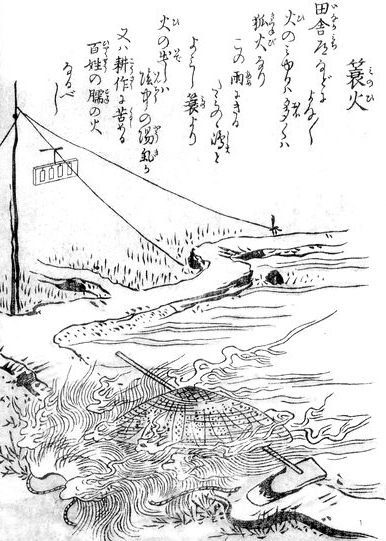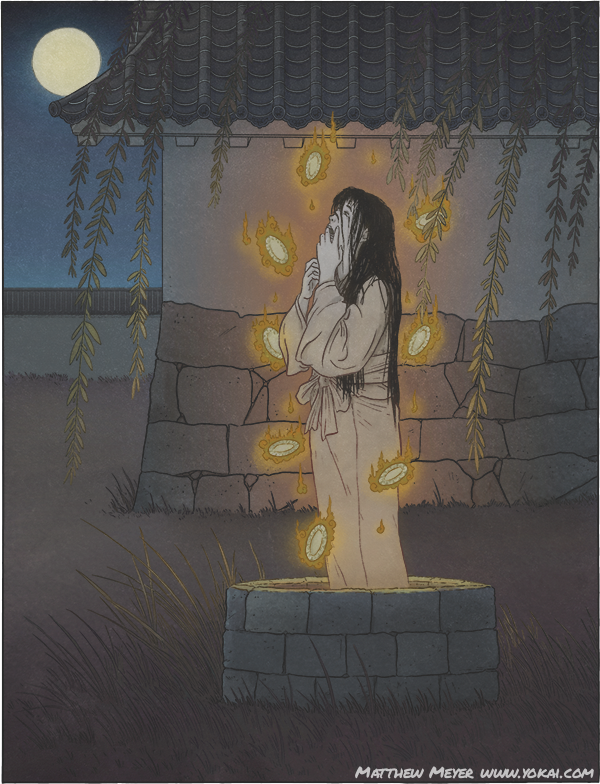Greetings yokai lovers!
Today marks the start of A-Yokai-A-Day for the Month of October.
Every day this month, I will post a new yokai description along with a piece of artwork. Some of them will be sketches, some of them will be digital ink line art, and some of them will be completed digital paintings.
This project is running concurrently with the Kickstarter project for The Book of the Hakutaku, my third yokai encyclopedia. Most of the yokai featured this month during A-Yokai-A-Day will end up in that book. So while you’ll see sketches on the blog this month, if you back the Kickstarter project you will get to see the artwork develop from sketch, to line art, to finished painting as the book is completed.
So without further ado, today’s yokai:
Minobi
蓑火
みのび
“raincoat fire”

蓑 – mino
In the old days, Japanese raincoats were made of straw and looked like the picture you see on the right. You’ve probably seen these before, either in old-timey photographs or else in woodblock prints (like those of Hiroshige, who depicted every day people in his artwork).
Minobi is a type of supernatural phenomenon called a kaika, or “strange fire.” You’ll find lots of these on yokai.com, but it includes other fireball-type yokai like onibi, hitodama, kitsunebi, sogenbi, ubagabi, and so on.
Minobi is said to appear during tsuyu, the Japanese rainy season, which usually comes in mid to late June. It appears in rural areas, particularly rural roads, lakes, and rivers. It’s found all over Japan, but it is particularly well known around Lake Biwa in Shiga Prefecture.

Toriyama Sekien’s Minobi
Minobi is easily confused with other types of yokai fires. It starts out as a collection of tiny orbs of fire, like kitsunebi. It tends to be attracted to people, and on rainy nights it gathers around the legs of farmers wearing straw raincoats. The orbs of fire gather in greater and greater numbers, until the straw raincoat is glowing as if covered by hundreds of tiny fireflies. If you panic and try to brush it away, that’s when things get strange: unlike regular fire, trying to pat out the minobi actually causes it to spread! On the other hand, if you have the presence of mind to quickly take off your raincoat and throw it on the ground, the fires will go out.
There are a lot of theories as to what causes minobi. In some areas, it is said to be a kind of kitsunebi—that is, fires caused by magical foxes. In other areas, itachi—trickster weasels—are said to cause minobi. In some areas it is blamed on minomushi (the bagworm moth) or fireflies. Here in Fukui Prefecture, it is said to be caused by tanuki.

Minobi sketch which will eventually be part of my Patreon project
If you liked today’s yokai, be sure to join my Kickstarter for The Book of the Hakutaku, an encyclopedia with over 100 yokai, fully illustrated!







